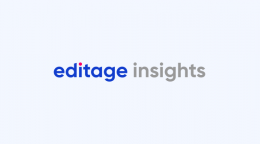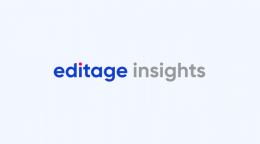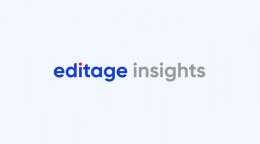Upholding research integrity: An interview with Joris van Rossum on the STM Research Integrity Hub

Journals and publishers are the primary checkpoints where scholarly work is vetted before it becomes published record. Traditionally, they tend to work independently of one another in their efforts to identify and prevent fraudulent work from being published. The STM Integrity Hub—launched in April 2022—is an initiative that brings together publishers of all types in an effort to combat some of the biggest emerging threats to publication integrity.
In this interview, I ask Joris van Rossum (Product Director, STM) how the hub came into being, what it has been doing so far, and what it hopes to achieve. Joris worked for several leading companies and organizations across the publishing space, including Digital Science and Elsevier, where he initiated and led a variety of important innovations and cross-publisher initiatives within the research and publishing ecosystem. He currently works at STM, where he is the Program Director for the STM Research Integrity Hub. Joris holds a master’s degree in biology and a PhD in philosophy.
What led to the establishment of the STM Integrity Hub?
While the vast majority of researchers take the utmost care to follow good research practices to ensure the integrity of their work, misconduct does happen. In recent years, publishers have seen an increase in papers submitted with integrity issues. This varies from manuscripts with manipulated images, plagiarism, or fabricated data.
We have also seen the emergence of paper mills, illegitimate commercial companies that fabricate manuscripts and offer these for sale. The latter in particular has become a significant challenge for scholarly communications. Together with COPE, the Committee on Publication Ethics, STM published a report about paper mills last year, which is freely downloadable. We are also seeing an increase in the use of technology by bad actors like paper mills. We expect that ChatGPT will make the creation of fake papers much easier, and AI techniques can also be used to fake images and data.
To address these challenges through a broad collaboration of publishers and other parties active in scholarly communications, STM launched the Integrity Hub last year. Through a combination of shared data and experiences, and by harnessing technological innovation, the STM Integrity Hub offers a holistic approach to detect fraudulent manuscripts. The expectation is that through these efforts, publishers will be able to effectively and efficiently reduce the volume of materials entering the scholarly record that violate accepted research integrity norms.
Who does the hub currently comprise of?
The STM Integrity Hub was launched by STM Solutions, the operational arm of STM (STM is the global association of Scientific, Technical and Medical Publishers and has more than 140 members). More than 60 people from 20 plus publishing organisations are currently participating in the initiative through membership in one of the various working groups. These groups each focus on specific challenges such as paper mills or image manipulation. We also work closely with other organizations, such as providers of manuscript submission software, and of course COPE.
Could you talk about the key areas of work the hub has been focusing on and any important findings that have emerged from the analyses performed so far?
We are currently focusing on three areas: image manipulation and duplication, paper mills, and duplicate submissions. In each of these areas, a working group with experts from STM member organisations share their expertise and discuss how the STM Integrity Hub can best support them – which could be in a number of ways, ranging from knowledge and insight sharing to developing training material to developing technology infrastructure.
With regard to image manipulation and duplication, we are developing a whole collection of instructional materials, such as videos for editors and information about screening tools. With regard to paper mills and duplicate submissions, we are developing tools that publishers and their editorial boards can use to screen incoming manuscripts for various kinds of manipulation. These tools we are developing will flag papers that look suspicious (for example, because they appear machine-generated or contain language previously used by papers mills), after which the editor can investigate the case further.
Our main finding so far is that paper mills keep adapting themselves. This means we must also be adaptive and agile, which is best done by working together to bundle expertise and resources. And this is the main reason why we launched the STM Integrity Hub!
In the launch webinar, you discussed the prototype of a tool being tested, which is expected to be released in this quarter. Could you briefly describe what this tool does?
The duplicate submissions tool will be connected to publishers’ submission systems. Once a paper gets submitted, metadata and other elements from the manuscript are sent to an independent, cloud-based environment where they can be checked against manuscripts submitted to other journals, including from other publishers. When there is a match on similarity, a signal is sent to both editors so they can investigate further, and reject the paper if necessary.
The Paper Mill Checker tool will screen incoming papers with several tools, both inhouse and externally developed. They check aspects like the paper’s language and the use of references. And new signals will be added over time. If something suspicious is detected, the editor is presented with a flag and can investigate further.
This is an important principle of the Hub – humans will always make the final editorial decision. The technology is merely designed to assist them in an efficient and effective manner. Naturally, we ensure that these tools fully respect the laws and ethics of data privacy. These tools will be made available to an increasing number of publishers over time, with the intention that they will become widely used across journals and scholarly publishers.
Both the volume of research produced and the scale of problems threatening research/publication integrity have been continuously increasing. In addition, new threats will keep emerging as technology evolves and makes misconduct easier and detection difficult. How does the hub aim to respond to such a dynamic situation sustainably, especially since it relies on active sharing of data/intelligence, pooling of content for trials to develop AI tools, and collaborative innovation?
Good questions, and I referred to it above already. The mission of the Hub is not just to develop tools, but also to exchange information, intelligence and data, and develop policies that can be rolled out across journals and publishers. With that aim, we hold regular meetings. As you said, it is a very dynamic environment! We are also keen to connect with companies that have developed tools which would complement those developed by the Hub. We are also currently working with several external companies.
Have you gained any insights on what might help address these problems at the root, in terms of what drives the adoption of unethical or questionable research practices?
That is also a very good point. Publishers play an important role in the detection of integrity issues and preventing these manuscripts from entering the scholarly record. But it is the responsibility of the entire scholarly ecosystem – including publishers but also funders, institutions, and of course researchers themselves – to tackle these issues and their root causes together.
The underlying cause can be a lack of knowledge. We have experienced that some researchers have not received proper training on what is allowed, so education and training in research integrity is very important. In other cases, the underlying cause is overreliance on singular metrics and excessive pressure to publish a certain number of papers, which can make it very tempting to use a paper mill!
These kinds of challenges require a unified approach, a collaboration with all stakeholders. At STM, we are working on promoting this dialogue amongst others by organizing conferences that bring together a variety of stakeholders.
What is your vision for what the Hub can achieve in the next 5 years?
The most ideal scenario would be if there were no longer a need for the Hub, as we would have managed to eradicate all misconduct! But that is of course overly optimistic. In any case, we do hope to have eliminated large-scale illegal activities such as those of paper mills. We think this is achievable by joining forces as publishers through the Hub, and also through collaboration with the wider scholarly ecosystem.
Our focus is on enabling the recognition of misconduct at the moment of submission, preventing these papers from ever entering the scholarly record. Retractions cost a lot of time and energy, and lead to an erosion of trust in science. Publishing has historically been based on trust and this has worked very effectively for decades – and for the vast majority, it still does. While we work to address the technical aspects of thwarting these relatively new challenges to the system, we want to be careful to ensure that we are at the same time not unintentionally increasing the barriers of entry for legitimate authors – regardless of their background, field of research, or geography.
Thank you, Joris! It has been really interesting to learn about the work the Hub is doing, and I hope that it will soon see success in the elimination of fraudulent publication practices.
Learn more about the STM Integrity Hub here.
Comments
You're looking to give wings to your academic career and publication journey. We like that!
Why don't we give you complete access! Create a free account and get unlimited access to all resources & a vibrant researcher community.

Subscribe to Conducting Research













